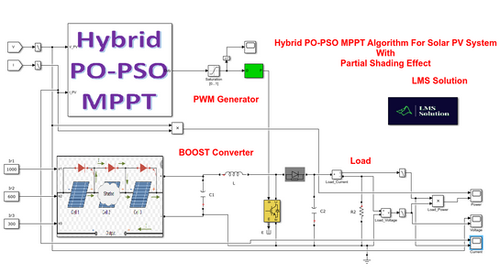
Hybrid PO-PSO MPPT for solar PV system | LMS Solution
Conventional maximum power point tracking (MPPT) methods such as the perturb-and-observe (P&O) method can only track the first local maximum point and stop progressing to the next maximum point. MPPT methods based on particle swarm optimization (PSO) have been proposed to track the global maximum point (GMP). However, the problem with the PSO method is that the time required for convergence may be long if the range of the search space is large. This work proposes a hybrid method, which combines P&O and PSO methods. Both the P&O method and PSO method work parallelly to find the GMP. The advantage of using the proposed hybrid method is that the search space for the PSO is reduced, and hence, the time that is required for convergence can be greatly improved. The excellent performance of the proposed hybrid method is verified by comparing it against the Conventional P&O, and PSO methods using MATLAB Simulation.
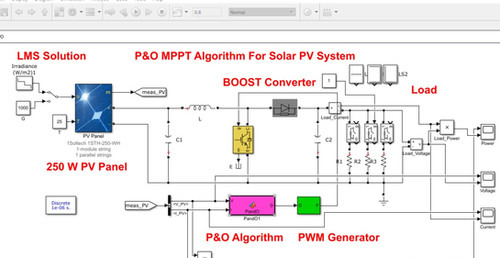
MATLAB -MPPT-PO-Solar PV System | LMS Solution Inter
MATLAB implementation of P&O MPPT for stand alone PV system.It is work with MATLAB 2017b version.

Hybrid PO-PSO MPPT for solar PV system | LMS Solution
Conventional maximum power point tracking (MPPT) methods such as the perturb-and-observe (P&O) method can only track the first local maximum point and stop progressing to the next maximum point. MPPT methods based on particle swarm optimization (PSO) have been proposed to track the global maximum point (GMP). However, the problem with the PSO method is that the time required for convergence may be long if the range of the search space is large. This work proposes a hybrid method, which combines P&O and PSO methods. Both the P&O method and PSO method work parallelly to find the GMP. The advantage of using the proposed hybrid method is that the search space for the PSO is reduced, and hence, the time that is required for convergence can be greatly improved. The excellent performance of the proposed hybrid method is verified by comparing it against the Conventional P&O, and PSO methods using MATLAB Simulation.

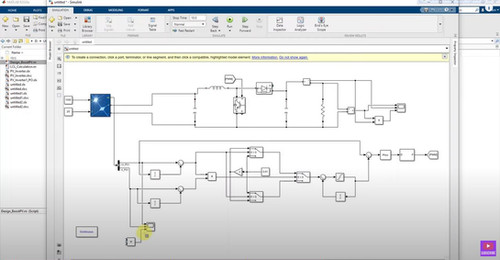
PO MPPT for 3 MW solar PV system | LMS Solution Inter
PO MPPT for 3 MW solar PV system Typically, the P&O method is used for tracking the MPP. In this technique, a minor perturbation is introduced to, cause the power variation of the PV module. The PV output power is periodically measured and compared with the previous power. If the output power increases, the same process is continued otherwise perturbation is reversed. In this algorithm, perturbation is provided to the PV module or the array voltage. The PV module voltage is increased or decreased to check whether the power is increased or decreased. When an increase in voltage leads to an increase in power, this means the operating point of the PV module is on the left of the MPP. Hence further perturbation is required towards the right to reach MPP. Conversely, if an increase in voltage leads to a decrease in power, this means the operating point of the PV module is on the right of the MPP and hence further perturbation towards the left is required to reach MPP.

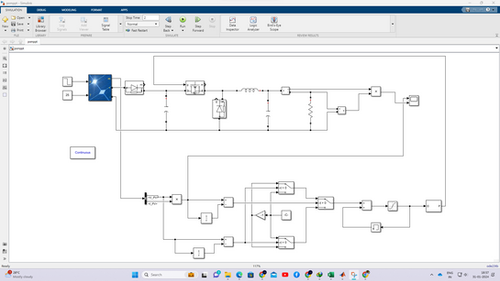
Step By Step Implementation of P&O MPPT In MATLAB | LMS Solution Inter
Implementing Perturb and Observe (P&O) Maximum Power Point Tracking (MPPT) in MATLAB involves several steps. First, define the characteristics of the photovoltaic (PV) module, including its voltage-current (V-I) and power-voltage (P-V) curves, and establish a mathematical model to represent the PV module behavior under varying irradiance and temperature conditions. Next, simulate the PV system in MATLAB by incorporating the PV module model, environmental data (such as solar irradiance and temperature), and the P&O algorithm. Within the P&O algorithm, periodically perturb the operating point of the PV module by incrementing or decrementing the PV voltage and observe the resulting change in power output. Continuously track the direction of power change to determine the optimal operating voltage that maximizes power output. Implement control logic to regulate the power converter (such as a buck or boost converter) to adjust the PV voltage accordingly. Validate the MPPT algorithm by analyzing the convergence speed, accuracy, and stability of the tracked maximum power point (MPP) under different environmental conditions. Finally, assess the overall performance of the P&O MPPT algorithm in terms of efficiency and robustness, considering factors like transient response and steady-state behavior, to ensure effective utilization of solar energy in PV systems.
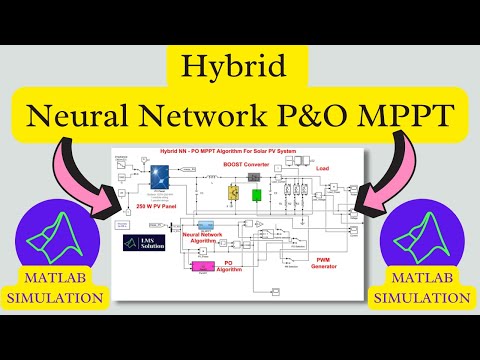
Hybrid MPPT | Hybrid Neural Network PO MPPT for Solar PV System

MATLAB -MPPT-PO-Solar PV System | LMS Solution Inter
MATLAB implementation of P&O MPPT for stand alone PV system.It is work with MATLAB 2017b version.








